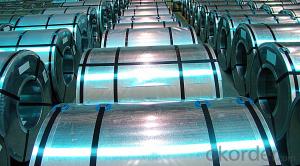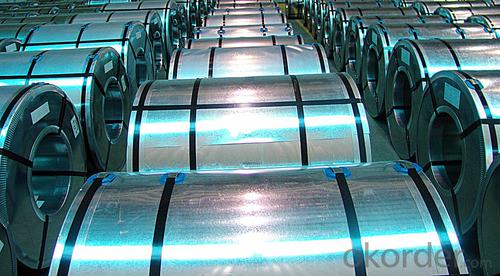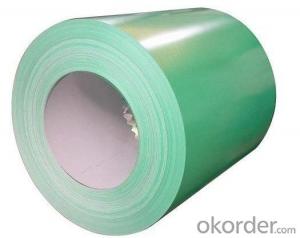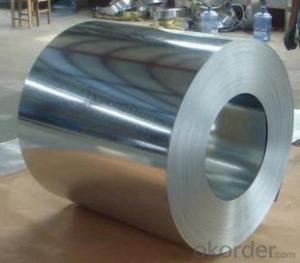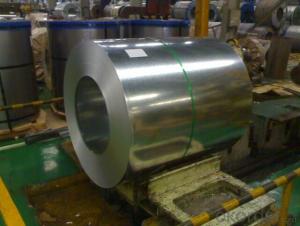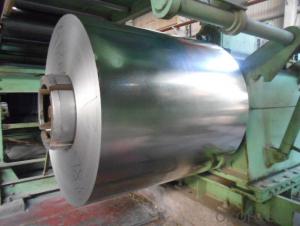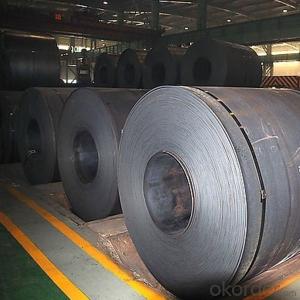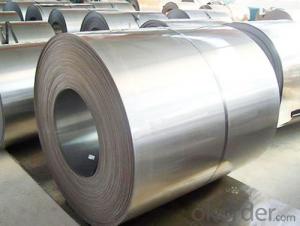Best Quality Hot Dip Galvanized Steel Coil
- Loading Port:
- China Main Port
- Payment Terms:
- TT OR LC
- Min Order Qty:
- -
- Supply Capability:
- -
OKorder Service Pledge
OKorder Financial Service
You Might Also Like
Product Description:
product information:
1)Operate Standard: ASTM A653M-04/JIS G3302/DIN EN10143/GBT 2518-2008
2)Grade : SGCD,SGCH, Q195,DX51D
3)Galvanized steel sheet /coil features:
4)Zinc coating :40-180g( as required)
5)width:914-1250mm(914mm, 1215mm,1250mm,1000mm the most common)
6)coil id:508mm/610mm
7)coil weight: 4-10 MT(as required)
8)surface: regular/mini/zero spangle, chromated, skin pass, dry etc.
9)application: Structural use ,roofing, commercial use, household appliance, industry, family;
special application: Wear resistant steel, high- strength - steel plate
Technical data :
Chemical Composition | ||||||
GRADE | C | Si | Mn | P | S | Ti |
SGCC/DX51D+Z | ≤0.10 | ≤0.50 | ≤0.60 | ≤0.10 | ≤0.030 | ≤0.020 |
DX52D+Z | ≤0.10 | ≤0.50 | ≤0.60 | ≤0.10 | ≤0.030 | ≤0.020 |
SGCD/DX53D+Z | ≤0.10 | ≤0.30 | ≤0.50 | ≤0.05 | ≤0.030 | ≤0.020 |
SGCE/DX54D+Z | ≤0.10 | ≤0.30 | ≤0.30 | ≤0.03 | ≤0.020 | ≤0.020 |
DX56D+Z | ≤0.10 | ≤0.30 | ≤0.30 | ≤0.03 | ≤0.020 | ≤0.020 |
Structural | ≤0.20 | ≤0.60 | ≤1.70 | ≤0.10 | ≤0.045 | |
hot dipped galvanized steel coil Mechanical Properties | |||
GRADE | Yield Strength MPa | Tensile Strength MPa | Elongation % |
SGCC(DX51D+Z) | ≥205 | ≥270 | - |
SGCD(DX53D+Z) | - | ≥270 | 38 |
SGCE(DX54D+Z) | - | ≥270 | 40 |
DX56D+Z | - | ≥270 | 42 |
- Q: What is the maximum tension that steel coils can withstand during uncoiling?
- The maximum tension that steel coils can withstand during uncoiling can vary depending on various factors such as the type and grade of steel, the dimensions of the coil, and the uncoiling process. However, steel coils are typically designed to withstand high tension forces, with maximum tensile strengths ranging from 300 to 2,000 megapascals (MPa). It is recommended to consult the manufacturer's specifications or engineering guidelines for precise information regarding the maximum tension limits for a specific steel coil.
- Q: Recently I bought Bleach's Grimmjow's replica sword from swordsswords and I was wondering how strong is 440 steel when used for a 21 inch blade? Can it cut effectively? Is it dangerous?
- You were seriously ripped off. I own a 440 stainless sword that I paid $29 for on eBay. It ain't a half bad sword actually, and like you said, I have never failed to cut straw mats with it. The 440 stainless is about as good as you can get without paying for a folded steel katana. However, I also own a Bugei company folded steel katana and the difference is night and day. The balance is better, the edge is incredible (you could literally shave with it) and there's just something....ELSE. There's a different FEEL. It's like the difference between using a tool and a weapon. As far as the shingami, again, you were ripped off. You can buy a traditional shingami from eBay and actually get it from a reputable company and not take your chances with the stuff you find at a mall. Even then, you will only pay maybe $50-$75 for a good set including shipping. Generally speaking, nothing you get from a mall or COULD get from a mall will be as good as something from a reputable company like Bugei. However, like in the case of your katana, some things might be good ENOUGH for you. However, you do need to look around and do some price checking before you drop that much money for anything. Hope this helps... Sensei Cox
- Q: How are steel coils coated for specific applications?
- Steel coils are coated for specific applications using a process called coil coating. In this process, the steel coils are cleaned, treated, and then coated with a layer of paint or other protective material. The coating is applied evenly and precisely to ensure optimal performance and durability in the intended application.
- Q: What bike companies make the best Steel Road bikes?
- Giant brand road bikes
- Q: I am doing an assignment for my materials class, im not asking for the answer but just some help. I have the assignment finished and handed in but the teacher gave it back with one comment, he asked me to explain the grain growth in steel during hydraulic press bending. Im completely stuck, please help. Thanks.
- There is such a thing as critical strain which will lead to extraordinary grain growth on annealing;but not without annealing.It would be to do with the density of grain growing sources and clearly the density of these nuclei woul increase with increasing severity of strain so I just of a guess that that those parts of a pressing with least strain might grow most.But I must tell you that in the case of Aluminium alloy extrusions severe and expensive coarse grain occurs near the surface and particularly toward the back end of the bar;so this would be where most severe deformation takes place.However in a pressed steel part you have all possible circumstances,some of which on ironed walls will resemble extrusion,others would be bending strains,tensile and compressive .I have to cop out of this now because as old wasname above,said it depends.But bear in mind that it is unlikely that the material you mention would be hot pressed,further arse grain might only be a surface problem and is likely to be cured by normalising so that new ferrite grows from austenite.A similar solution does't exisat for Al alloy extrusions,it has to be machined off.In a cold steel pressig you would only expect to see a cold worked sructure because the recrystallisation temperature of pressable steel would not be less than,say 550 degrees C .
- Q: Myself, iam Working In a Steel Fabrication Company. I completed my Engineering in 2006 and immediately recruited in this company in Oman. My company is Steel Fabrication company .So as i am new to this field, i just need some basic knowledge regarding this Steel Fabrication.Waiting for ur early reply.
- make searches on internet; it's the best way to learn.
- Q: How do steel coils contribute to the marine industry?
- Steel coils contribute to the marine industry by being used in the construction of ships and offshore structures. They are essential for manufacturing various components, such as hulls, decks, beams, and structural supports. Steel coils provide strength, durability, and corrosion resistance, ensuring the longevity and safety of marine vessels and infrastructure. Additionally, steel coils are used for the production of marine equipment, including cranes, winches, and anchor chains, further enhancing the efficiency and functionality of the marine industry.
- Q: How are steel coils packaged for shipment?
- Steel coils are typically packaged for shipment by being tightly wound and secured with steel bands or straps. They are often placed on wooden skids or pallets to provide stability and protection during transportation. Additionally, protective covers or sheets may be used to shield the coils from moisture and other potential damages.
- Q: How are steel coils used in the production of kitchenware?
- Steel coils are used in the production of kitchenware as they serve as the primary material for manufacturing various items like pots, pans, and utensils. The coils are typically cut and shaped into the desired form before being further processed through various techniques such as stamping, welding, and polishing. These processes help create durable and heat-resistant kitchenware that is essential for cooking and food preparation.
- Q: How are steel coils protected from condensation?
- Steel coils are protected from condensation through a variety of methods including the application of moisture-resistant coatings, the use of desiccants or drying agents, and the implementation of proper storage and handling techniques such as maintaining appropriate temperatures and humidity levels.
Send your message to us
Best Quality Hot Dip Galvanized Steel Coil
- Loading Port:
- China Main Port
- Payment Terms:
- TT OR LC
- Min Order Qty:
- -
- Supply Capability:
- -
OKorder Service Pledge
OKorder Financial Service
Similar products
Hot products
Hot Searches
Related keywords
